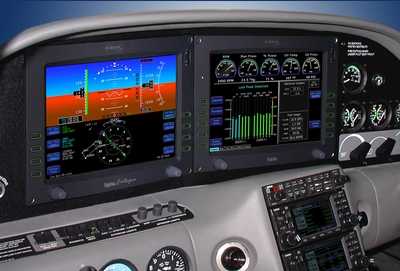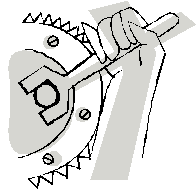Suggests FAA Should Treat All Regulated Mechanics The Same
 ANN has learned the
Aircraft Electronics Association (AEA) -- which represents more
than 1,300 aviation businesses worldwide, including repair stations
-- has responded to the FAA's request for public comment
regarding the air agency's proposal to increase the Inspection
Authorization (IA) renewal period to two years. Although AEA agrees
with the FAA's proposal, it nonetheless offered comments to the
FAA... just not about the IA renewal period.
ANN has learned the
Aircraft Electronics Association (AEA) -- which represents more
than 1,300 aviation businesses worldwide, including repair stations
-- has responded to the FAA's request for public comment
regarding the air agency's proposal to increase the Inspection
Authorization (IA) renewal period to two years. Although AEA agrees
with the FAA's proposal, it nonetheless offered comments to the
FAA... just not about the IA renewal period.
AEA's Ric Peri told ANN, "Because the FAA opened Part 65 up for
comment, it gave us the opportunity to make recommendations we feel
are important."
At the heart of AEA's comments to the FAA is the association's
fundamental disagreement with differences in the way the FAA
regulates maintainers working under Parts 65 and 145 of the Federal
Aviation Regulations.
There are literally thousands of one-man shops around the
country with individuals certificated as A&P mechanics under
FAR Part 65. These individuals are required to obtain an IA to
perform an annual inspection. But as the name of the certificate
implies, there are only two ratings required: airframe and
powerplant.
Organizations certificated under Part 145 are designated as
repair stations, and the certification requirements they must meet
are much more stringent. In fact, there are several ratings and
sub-ratings, and a repair station must meet all requirements for a
rating in order to perform maintenance on aircraft, powerplants or
appliances to which the rating applies.
Yet, according to the FARs, the ordinary, run-of-the-mill,
one-man repair shop can perform the same maintenance as repair
stations. AEA asks why the disparity in certification
requirements?

In its comments the FAA AEA states, "Currently, the FAA allows
an A&P with Inspection Authorization -- which was issued based
on documented experience on single-engine piston-driven airplane --
to approve for return-to-service a turbine-powered helicopter
following the installation of the latest technology electronics
system with little or no regulatory oversight."
AEA calls the FAA's current approach to return-to-service
authority unacceptable in light of new airframe, powerplant and
electronics technologies -- especially those those aircraft
utilizing integrated electronics systems.
Conversely, says AEA, "As the next generation of A&P
mechanics emerges without the skills to maintain legacy
technologies, their knowledge, skills and abilities to approve for
return-to-service older aircraft with wood structure or fabric
skins will be greatly reduced."
Specifically, AEA proposes the FAA change Part 65 rules
regarding certification of those holding inspection authorization
to read the same as rules under Part 145. It would establish a
rating system identical to that under which repair stations
operate, and a mechanism allowing for part certification. In other
words, an A&P may be certified to work on only those aircraft,
powerplants, propellers, parts or appliances for which he or she is
rated -- just like a repair station.
AEA recommends the FAA divide Part 65 airframe ratings to
four classes:
- Class 1: Composite construction of small aircraft
-
 Class 2: Composite
construction of large aircraft
Class 2: Composite
construction of large aircraft
- Class 3: All-metal construction of small aircraft
- Class 4: All-metal construction of large aircraft
Powerplant ratings to three classes:
- Class 1: Reciprocating engines of 400 horsepower or less
- Class 2: Reciprocating engines of more than 400 horsepower
- Class 3: Turbine engines
Propellers ratings two classes:
- Class 1: Fixed-pitch and ground-adjustable propellers of wood,
metal, or composite construction
- Class 2: Other propellers, by make
The changes as proposed, says AEA, will serve to closer align US
regulation with that of the International Civil Aviation
Organization.
As justification for its suggestions, AEA's posed the following
question to the FAA: "Why should a business with a quality system,
a reviewed and accepted business plan and an approved employee
training program be regulated when 60,000 individuals without a
quality system, a business plan or a training program have
unlimited authority for return to service of aircraft, engines, and
accessories?"
ANN asked Ric Peri how AEA would respond to the individual
A&P who might feel AEA is attempting to limit his or her
business. Peri said, "No more than the FAA limits the business of
repair stations.
"We only ask that the FAA apply existing rules governing repair
station certification across the board. If the FAA can make a set
of sound safety arguments that apply to one [group], they should
apply to both."
 ANN's Daily Aero-Linx (05.06.25)
ANN's Daily Aero-Linx (05.06.25) ANN's Daily Aero-Term (05.06.25): Ultrahigh Frequency (UHF)
ANN's Daily Aero-Term (05.06.25): Ultrahigh Frequency (UHF) ANN FAQ: Q&A 101
ANN FAQ: Q&A 101 Classic Aero-TV: Virtual Reality Painting--PPG Leverages Technology for Training
Classic Aero-TV: Virtual Reality Painting--PPG Leverages Technology for Training Airborne 05.02.25: Joby Crewed Milestone, Diamond Club, Canadian Pilot Insurance
Airborne 05.02.25: Joby Crewed Milestone, Diamond Club, Canadian Pilot Insurance





